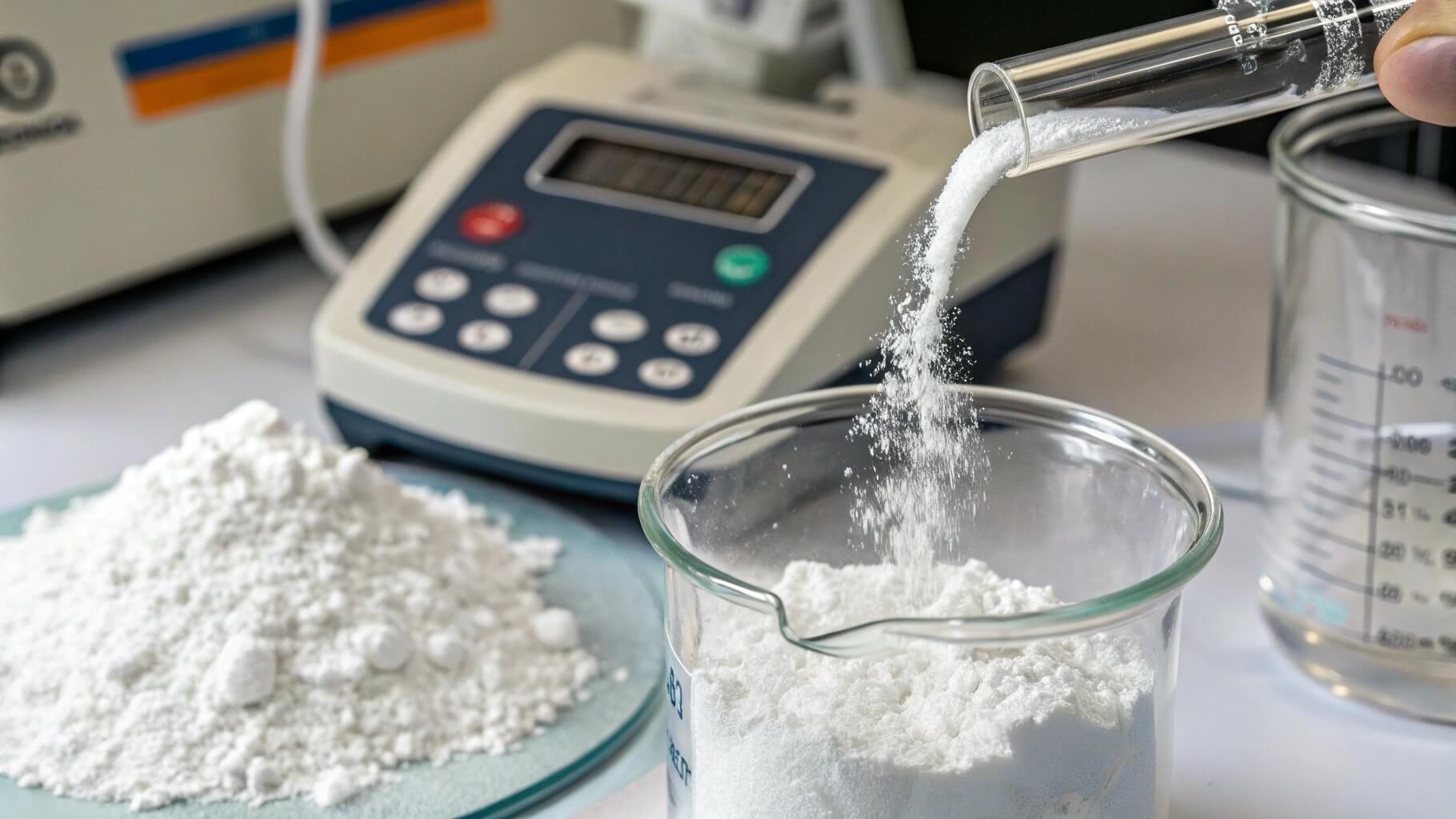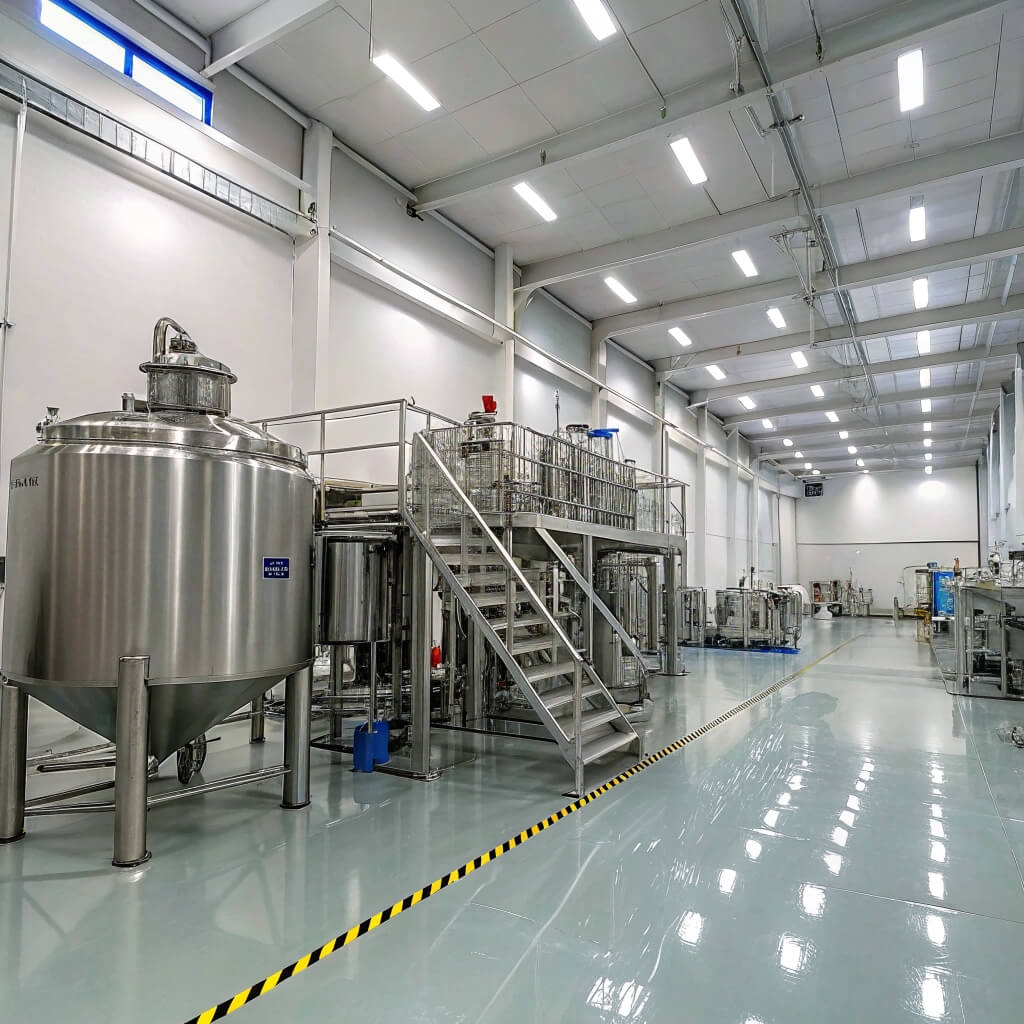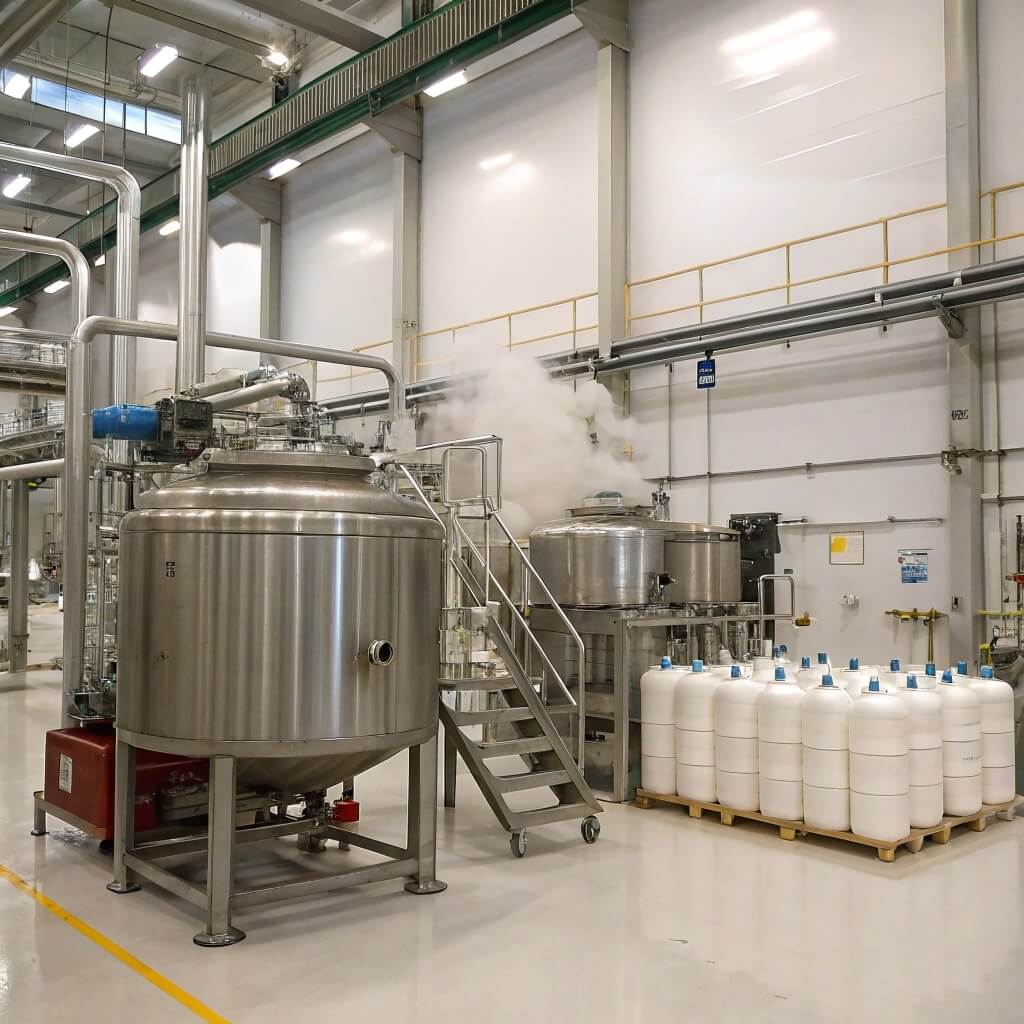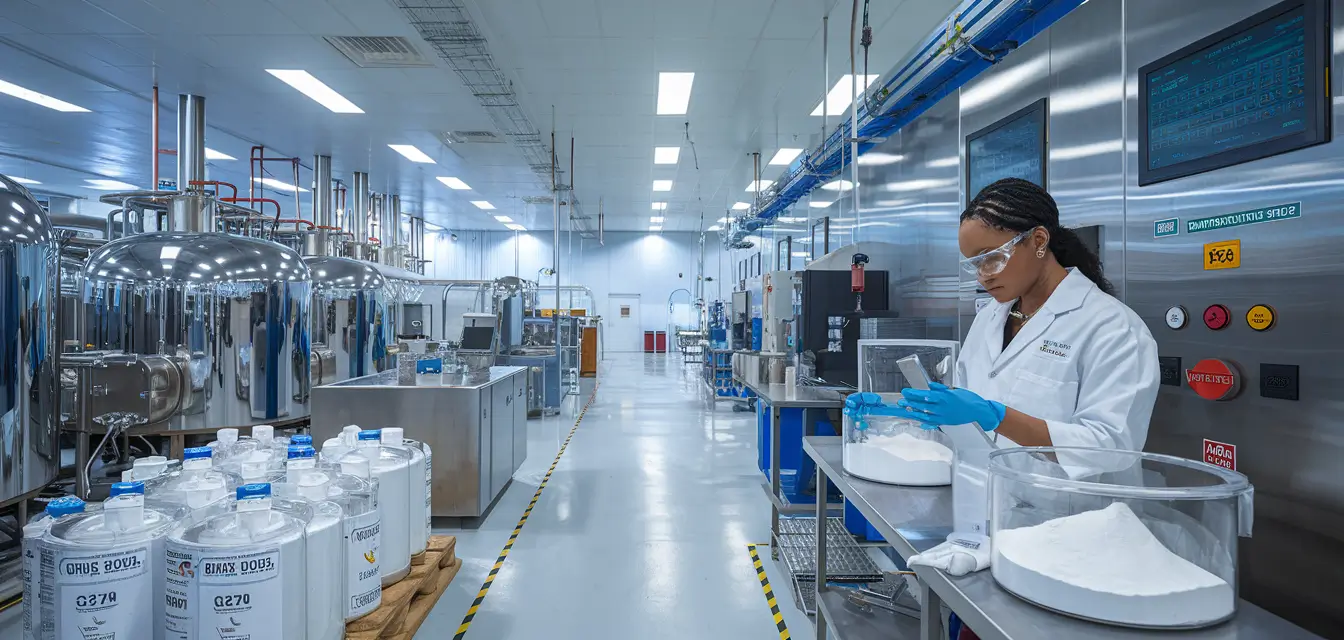Mixing HPMC E15 in a solution may seem simple, but improper techniques can lead to clumping, incomplete dissolution, or gelation issues. Without the right approach, achieving uniform dispersion and viscosity control becomes challenging.
HPMC E15 dissolves best when gradually dispersed in cold water (10-25°C), hydrated for 15-60 minutes, and then gently heated to 40-60°C. Proper stirring speed, pH control, and solvent selection further optimize the dissolution process.

A step-by-step representation of HPMC E15 dissolution, showing hydration, mixing, and temperature influence.
Understanding the chemistry and solubility behavior of HPMC E15 is crucial for effective formulation. Next, we’ll explore its composition, applications, and why proper solubility matters in various industries.
What is HPMC E15 and Why is it Important?
Hydroxypropyl Methylcellulose (HPMC) E15 is a water-soluble polymer widely used in pharmaceuticals, construction, and personal care applications. But why is its solubility so important? Poor dispersion can lead to clumping, inconsistent viscosity, and reduced functionality, affecting product performance.
HPMC E15 is a non-ionic cellulose ether with film-forming, thickening, and stabilizing properties. Its ability to dissolve properly impacts drug delivery, adhesive strength, and formulation stability in various industries.
Key Applications of HPMC E15
| Industry | Function |
|---|---|
| Pharmaceuticals | Used as a binder, controlled-release agent, and film-coating polymer. |
| Construction | Improves water retention in cement-based materials, enhancing adhesion. |
| Personal Care | Acts as a thickener and emulsifier in cosmetics and skincare products. |
Why Solubility Matters in These Applications
- Pharmaceuticals – HPMC E15 is essential for drug delivery systems, especially in controlled-release formulations. Poor solubility can lead to irregular drug release and reduced bioavailability.
- Construction – Used in tile adhesives and plasters, where it enhances water retention and workability. Inconsistent solubility weakens adhesion and durability.
- Personal Care – Functions as a film-former and viscosity modifier in lotions and gels. Improper mixing can result in unstable formulations and separation.
Since HPMC E15’s effectiveness depends on proper dissolution, understanding factors that influence its solubility is critical. Next, we’ll examine temperature, pH, and other elements that impact how well it dissolves in different solutions.
What Factors Affect the Solubility of HPMC E15?
HPMC E15 is highly water-soluble, but various factors can influence how well and how quickly it dissolves. If not properly managed, issues like clumping, incomplete hydration, or premature gelation can occur, affecting the final formulation’s stability and performance.
The solubility of HPMC E15 is affected by temperature, pH, molecular structure, and solvent compatibility. Understanding these factors helps ensure optimal dissolution in pharmaceuticals, construction, and personal care formulations.
Key Factors Influencing HPMC E15 Solubility
| Factor | Impact on Solubility |
|---|---|
| Water Temperature | Cold water prevents clumping; warm water (40-60°C) enhances dissolution. |
| pH Level | Ideal range: 5.0-8.0. Extreme pH values can alter viscosity and hydration. |
| Molecular Structure | Hydroxypropyl substitution degree affects solubility and gelation temperature. |
| Organic Solvent Compatibility | Limited solubility in organic solvents like ethanol and acetone. |
Influence of Temperature: HPMC E15 in Cold Water vs. Hot Water
- Cold Water (10-25°C): Best for initial dispersion, preventing premature gelation.
- Warm Water (40-60°C): Helps complete dissolution after hydration.
- Hot Water (>70°C): Causes instant gel formation, making further dissolution difficult.
Effect of pH on HPMC Dissolution and Hydration Time
- pH 5.0-8.0: Optimal range for stable viscosity and complete hydration.
- Below pH 5.0: Can lead to polymer degradation and viscosity reduction.
- Above pH 8.0: May cause structural instability, affecting formulation consistency.
Role of Hydroxypropyl Substitution and Molecular Weight in Solubility
- Higher hydroxypropyl substitution increases water solubility and gelation resistance.
- Higher molecular weight polymers dissolve more slowly but provide better film-forming properties.
HPMC Water Solubility vs. Solubility in Organic Solvents
- Freely soluble in water, forming clear or slightly turbid solutions.
- Limited solubility in ethanol, acetone, and other organic solvents, though it may swell or disperse in mixed solvent systems.
- Can form gels in hydroalcoholic solutions, depending on concentration and temperature.
By optimizing these factors, HPMC E15 dissolves efficiently, ensuring consistent performance across industries. Next, we’ll explore the best step-by-step method to dissolve HPMC E15 in water without common mixing issues.
How to Properly Dissolve HPMC E15 in Water?
Dissolving HPMC E15 correctly is crucial to achieving optimal viscosity, stability, and performance in formulations. If not handled properly, issues such as clumping, premature gelation, or slow hydration can occur, affecting the final product quality.
HPMC E15 dissolves best when gradually dispersed in cold water (10-25°C), allowed to hydrate for 15-60 minutes, and then heated to 40-60°C for full dissolution. Proper stirring techniques and pH control further improve solubility.
Step-by-Step Process for Dissolving HPMC E15 in Cold Water
-
Cold Water Dispersion (10-25°C)
- Slowly sprinkle HPMC E15 into cold water while stirring.
- Avoid dumping all at once to prevent clumping.
-
Hydration Phase (15-60 min)
- Allow the polymer to absorb water and swell fully.
- Stir gently at moderate speed for uniform dispersion.
-
Gradual Heating (40-60°C)
- Once hydrated, increase temperature gradually to speed up dissolution.
- Avoid direct heating above 70°C, which can cause premature gelation.
-
Final Mixing
- Stir continuously until the solution becomes clear or slightly translucent.
- Use a moderate-speed overhead stirrer to prevent foaming.
Common Issues and Troubleshooting Dissolution Problems
| Issue | Cause | Solution |
|---|---|---|
| Clumping | HPMC added too quickly into water | Sprinkle slowly while stirring at moderate speed. |
| Gel Formation Too Early | Water temperature too high at the start | Start with cold water before applying heat. |
| Incomplete Dissolution | Insufficient mixing or incorrect pH | Maintain pH between 5.0-8.0 and stir thoroughly. |
| Foaming and Air Bubbles | Excessive mixing speed | Use moderate stirring and let solution settle. |
How to Prevent Gelation When Mixing HPMC in Hot Water
- Never add HPMC E15 directly to hot water, as it forms an instant gel layer, preventing proper dispersion.
- Always disperse in cold water first, allowing time for hydration before applying heat.
- Use gentle heating (40-60°C) after hydration to achieve complete dissolution.
Techniques to Improve HPMC Hydration and Dissolution Rate
- Pre-wet with ethanol or glycerin before adding to water for better dispersion.
- Use a vortex or overhead stirrer at moderate speed to ensure even distribution.
- Maintain a neutral pH (5.0-8.0) for optimal hydration and stability.
By following these best practices, HPMC E15 dissolves smoothly and efficiently, ensuring consistent performance in pharmaceutical, food, and industrial applications. Next, we’ll explore whether HPMC E15 can be mixed with other solvents and how it behaves in different formulations.
Can HPMC E15 be Mixed with Other Solvents?
While HPMC E15 is primarily water-soluble[^1], its compatibility with organic solvents and other excipients can impact dispersion, gel formation, and overall formulation stability. Selecting the right solvent system is essential to achieving optimal performance in pharmaceutical, personal care, and industrial applications.
[^1]: Explore the advantages of water-soluble polymers to enhance your understanding of formulation stability and performance.
HPMC E15 is partially soluble in organic solvents but requires water for full hydration. It may disperse in ethanol, acetone, and other solvents, but complete dissolution depends on the formulation’s solvent ratio and processing conditions.
Solubility of HPMC E15 in Organic Solvents
| Solvent | Solubility Behavior |
|---|---|
| Water | Fully soluble, forms clear or slightly turbid solutions. |
| Ethanol | Swells but does not fully dissolve; forms dispersions in hydroalcoholic systems. |
| Acetone | Insoluble; may form a precipitate depending on concentration. |
| Glycerin | Pre-wetting agent that improves dispersion in aqueous systems. |
| Isopropanol | Limited solubility; used as a co-solvent in some formulations. |
Compatibility with Other Polymeric Excipients and Viscosity-Modifying Agents
- Works well with cellulose derivatives (e.g., HPMC K-series, PVP, and PEG) for modified-release drug formulations.
- Compatible with surfactants and emulsifiers to improve dispersion in personal care products.
- Can be blended with synthetic polymers for enhanced film-forming properties in coatings and adhesives.
How Solvent Selection Influences HPMC Dispersibility and Aqueous Gel Formation
- Hydroalcoholic Systems: HPMC E15 disperses in water-alcohol mixtures, forming stable colloidal solutions in controlled concentrations.
- Non-Polar Solvents: Limited compatibility with non-polar solvents like hexane or chloroform.
- Co-Solvent Approach: Using glycerin or propylene glycol as a pre-wetting agent enhances dispersion in mixed solvent systems.
By understanding solvent interactions, formulators can optimize HPMC E15 solubility and stability, ensuring smooth mixing and controlled gel formation. Next, we’ll explore the best practices for using HPMC E15 in various formulations to achieve optimal results.
What Are the Best Practices for Using HPMC E15 in Formulations?
Proper handling of HPMC E15 is crucial for achieving optimal viscosity, stability, and functionality in various applications. If not mixed correctly, issues like clumping, uneven dispersion, or viscosity inconsistencies can occur, affecting product performance.
Optimal Concentration Levels for Different Applications
| Application | Recommended HPMC E15 Concentration |
|---|---|
| Pharmaceuticals (Controlled Release Tablets) | 2-10% as a binder or release modifier |
| Film Coatings | 2-5% for uniform coating formation |
| Personal Care (Lotions & Gels) | 0.5-2% as a thickener and emulsifier |
| Construction (Cement & Adhesives) | 0.2-1% for water retention and adhesion improvement |
Higher concentrations increase viscosity, requiring longer hydration times and optimized mixing conditions for full dissolution.
Impact of Mixing Speed and Equipment on Dissolution Efficiency
- Overhead stirrers at moderate speeds (300-600 rpm) ensure proper hydration without excessive air incorporation.
- High-shear mixers can reduce dissolution time but may cause foaming and loss of viscosity.
- Vortex mixing helps with rapid dispersion, but prolonged high-speed mixing can introduce bubbles, affecting the final product consistency.
Using HPMC E15 as a Film Former and for Wet Granulation
- Film Formation: HPMC E15 acts as an excellent film-forming agent in coatings, ensuring controlled-release drug delivery and tablet protection.
- Wet Granulation: It improves particle binding and flow properties, enhancing tablet compactness while maintaining controlled disintegration.
Long-Term Stability Considerations When Formulating with HPMC
- Store in a dry, cool environment to prevent moisture absorption, which can alter viscosity.
- Maintain pH between 5.0-8.0 to prevent polymer degradation.
- Avoid prolonged exposure to temperatures above 100°C, as excessive heat can weaken film integrity and hydration properties.
By following these best practices, formulators can ensure HPMC E15 dissolves efficiently and performs optimally, whether used in pharmaceutical, construction, or personal care applications. Next, we’ll summarize the key takeaways for successfully dissolving and applying HPMC E15 in formulations.
Conclusion
Achieving optimal solubility of HPMC E15 is essential for ensuring its functional performance in pharmaceuticals, construction, and personal care applications. Without proper mixing and dissolution techniques, issues like clumping, incomplete hydration, or gelation can compromise formulation stability and efficiency.
Key Takeaways for Successfully Dissolving HPMC E15
- Start with cold water (10-25°C) to prevent premature gel formation.
- Allow proper hydration (15-60 minutes) before applying heat.
- Gradually increase temperature to 40-60°C to accelerate full dissolution.
- Maintain a stable pH (5.0-8.0) for optimal viscosity and polymer stability.
- Use moderate stirring speeds to prevent air entrapment and foaming.
- Pre-wet with ethanol or glycerin for better dispersion in high-viscosity solutions.
Final Recommendations for Ensuring Optimal Solubility and Application Efficiency
For successful formulation, controlling water temperature, mixing techniques, and pH levels is crucial. Proper dissolution enhances HPMC E15’s role as a thickener, binder, and film-forming agent, ensuring stability and consistency across various industries.
By following these guidelines, manufacturers can improve product quality, reduce processing issues, and maximize the benefits of HPMC E15 in their formulations.
FAQ
Is HPMC E15 soluble in water?
Yes, HPMC E15 is highly water-soluble. It disperses well in cold water (10-25°C) and fully dissolves when gradually heated to 40-60°C. However, adding it directly to hot water above 70°C can cause premature gelation, preventing proper solubility.
How to dissolve HPMC in water?
To dissolve HPMC in water efficiently:
- Cold Water Dispersion (10-25°C) – Sprinkle HPMC slowly into cold water while stirring.
- Hydration Phase (15-60 min) – Allow time for the polymer to absorb water and swell.
- Gradual Heating (40-60°C) – Increases solubility while maintaining viscosity stability.
- Final Mixing – Stir at moderate speed to achieve a clear or slightly translucent solution.
Avoid high-speed mixing to prevent foaming and air bubbles.
How do you prepare HPMC coating solution?
To prepare an HPMC coating solution for pharmaceuticals or food coatings:
- Weigh the required HPMC E15 amount based on the desired concentration (typically 2-5%).
- Disperse in cold water (10-25°C) with gentle stirring.
- Allow hydration for 30-60 minutes to prevent clumping.
- Gradually heat to 40-60°C for full dissolution.
- Adjust viscosity and pH (5.0-8.0) as needed before application.
For hydroalcoholic coating solutions, ethanol or isopropanol may be added in controlled ratios to enhance solubility.
How to solve HPMC?
If HPMC does not dissolve properly, consider the following solutions:
- If clumping occurs, reduce the addition speed and stir continuously.
- If gelation happens too early, lower the initial water temperature and hydrate before heating.
- If incomplete dissolution occurs, check pH stability and mixing speed.
- If foaming appears, reduce stirring speed and let the solution stand before use.
Proper temperature control, hydration time, and mixing techniques ensure smooth and consistent dissolution of HPMC E15 in various applications.




